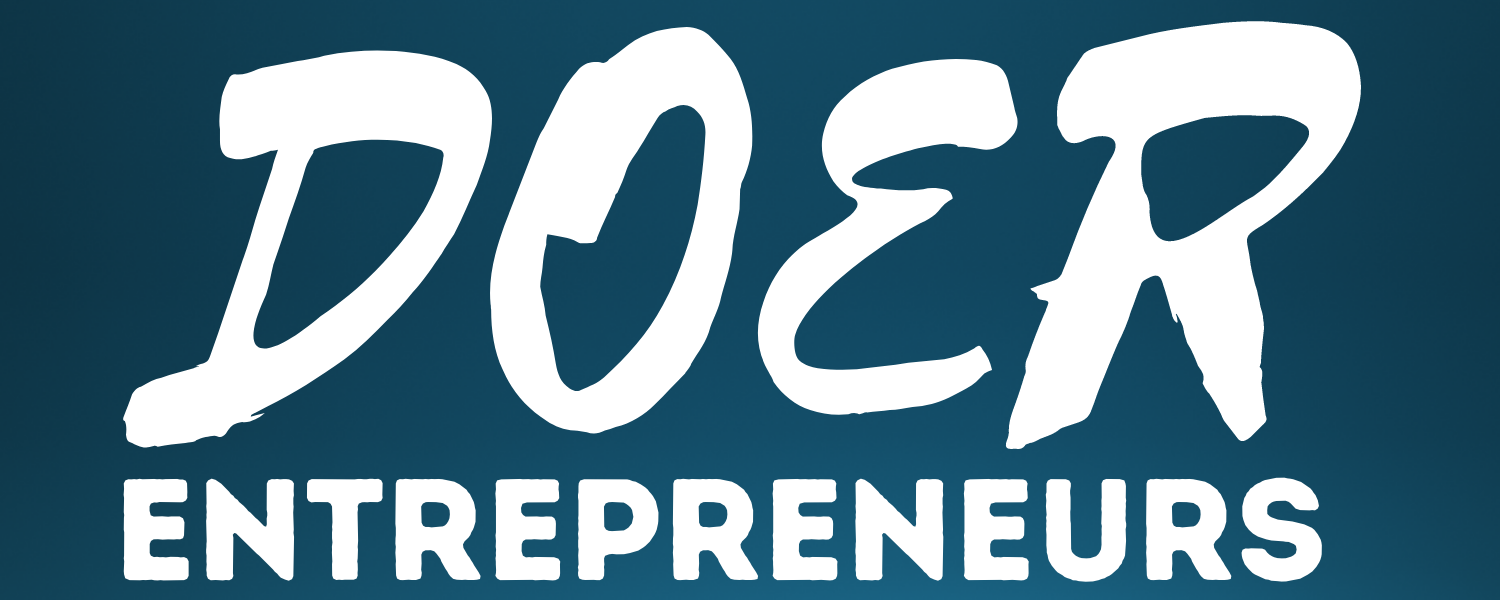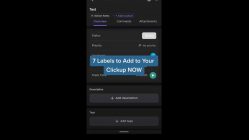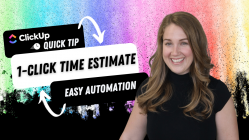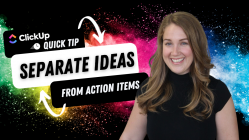VidCon 2022 was awesome and even with the bit I attended, I came away with a lot of great information, ideas, realizations and it even sent me down a few (productive) rabbit holes once I got home, so I’ve included some of that here, too. Let’s dive in!
Content Creator Vs. Entrepreneur
Takeaway from + my thoughts inspired by: The TikTok Blueprint: Knowing Your For You Feed. Panelists: Kristine Thompson TT: @trendycurvy, Kyne TT @onlinekyne, Owen Han TT: @owen.han
All content creators are, by definition, entrepreneurs–that is, if they want to make money at content creation. By the same token, all entrepreneurs are content creators, by definition, if they want distribution. Whether entrepreneurs create content on Instagram or an SEO-friendly blog on their websites, it’s still content creation with the goal of targeted attention. This means that we are all in it together in one sense, and fighting each other for that attention in another. The good news is, content consumers are consuming a LOT of content. The even better news is, many of the creators successful enough to land them on stage at VidCon said they started just 1-2 years (sometimes months) prior but, of course, they were creating content on a platform that had a lot more consumers than creators (TikTok). This really shows what is possible when that’s the case. Below, you’ll find some options for current content starved places and things to keep an eye on (Thanks VidCon)!
Repurposing content is key to both productivity and staying sane
Takeaway from + my thoughts inspired by: Get the Most from Your Post: Powerful Content Bundles by Crystal Lambert (Technical Writer, Google) & Kaya Marriott (Content Creator, Comfygirlcurls)
Content repurposing is key. One example from VidCon was Kaya Marriott who uses a full length YouTube video + an edited transcription to create a blog and then pulls clips or shoots clips and images at the same time as the YouTube video for other visual platforms. This means she can spend one day of shooting to produce weeks or more of content for multiple platforms (even Pinterest!). Marriott was discussing this process from the perspective of brand deals but this strategy can also be used by entrepreneurs to “be everywhere” without having to create nonstop and also really systematize content production.
Brand deals Vs. selling YOUR offer
Takeaway from + my thoughts inspired by: Takeaway from: Get the Most from Your Post: Powerful Content Bundles by Crystal Lambert (Technical Writer, Google) & Kaya Marriott (Content Creator, Comfygirlcurls) | Beat the Burnout: Strategies for Becoming a Sustainable Creator by a Google Representative & Yaya Han (Costume Designer and Author)
Multiple presenters were telling content creators they really need a website AND their own product or offer to sell. Many creators rely 100% on brand deals to make money, which can create a never-ending treadmill effect (constantly landing the next deal plus creating new content for the brand and for their own audience). An example of what the end result can look like when executed well by a creator with their own product was a chef with a large Instagram following who makes $30,000/month (I’m relying on memory for the number so it’s very rough) selling his cookbook from his Instagram profile.
Entrepreneurs already have a product to sell but they can benefit from considering their following and traffic as an asset that they can leverage in addition to selling their own products. This might look like overlapping brand deals, advertisements, and even affiliate options to create additional revenue streams beyond their own product or service as well as to provide additional value to their customers that they don’t already provide. Affiliate options might include commission from a tool or even just referring leads which you’ve disqualified but might be qualified for a colleague or other company.
“Link in Bio” has changed dramatically
Takeaway from + my thoughts inspired by: Takeaway from: Get the Most from Your Post: Powerful Content Bundles by Crystal Lambert (Technical Writer, Google) & Kaya Marriott (Content Creator, Comfygirlcurls) | Beat the Burnout: Strategies for Becoming a Sustainable Creator by a Google Representative & Yaya Han (Costume Designer and Author)
If you’ve never heard “Link in Bio”, it is used as a call to action on platforms like Instagram that don’t allow working links in posts. Even if that’s old news to you, there are a TON of new “Link in Bio” services so if it’s been a while since you’ve reviewed these options, it might be time to take another look. They range from entire storefronts to simple and straightforward, very mobile-friendly, low-click options for lead generation or purchase for both content creators and business owners. Examples and stats were provided showing the reduced friction (fewer clicks, mobile-first, etc.) improved sales and opt-ins ONCE you have distribution on that platform (if no one is viewing your profile, then optimizing your link won’t matter much…yet!). Here are some that were mentioned at VidCon and that I have come across since that are worth a look as well as some tried and true: Koji, Stan, Link Tree, Later Link in Bio,
Own your views is good advice – but owning your audience is better
Takeaway from + my thoughts inspired by: Takeaway from: Get the Most from Your Post: Powerful Content Bundles by Crystal Lambert (Technical Writer, Google) & Kaya Marriott (Content Creator, Comfygirlcurls) | Beat the Burnout: Strategies for Becoming a Sustainable Creator by a Google Representative & Yaya Han (Costume Designer and Author)
Emphasis was put on telling creators to have their own website and reminders (warnings?) were given: any of these platforms can ban an account at any time and getting a banned account back isn’t always straightforward, even if it happened in error. Having your own website means owning your views and traffic. A great question was asked of one of the creator-presenters promoting the concept that creators need websites about whether or not people are really willing to leave a platform they’re on like Instagram to go view your website and also whether platforms reduce views of content that is intended to move people off platform. The presenter had a great answer (Yaya Han)! She said that she offers additional things on her website that aren’t on Instagram or TikTok but that the content provided on Instagram and TikTok is still valuable and entertaining. In other words, it’s the difference between posting constant advertisements (e.g., “go to my website for [insert real value here]!) to your following vs. value that is complete in short form but so compelling, viewers and fans want more of it. Then directing that desire for deeper or more detailed value to your website. I thought this was a really great way of describing how to get everything to work together. Kaya Marriott’s Content Bundle format has a similar effect by providing short-form content on social media AND long-form content on her own website.
Interestingly, I didn’t see much focus on list building, which is really the difference between Instagram owning your audience and YOU owning your audience. I was there a short time so other sessions might have targeted this. With that said, if you’re reading this, please remember that list building is king. If you have an email list of your audience and your account gets banned, it means you have a way to reach them while your account is down or you can even start a new account and push your audience to it. There are a LOT of other reasons to build a list, but I want to keep this article short!
Where Amazon leads, we should all follow
Takeaway from + my thoughts inspired by: Amazon Booth in the Exhibit Hall
Amazon is moving into becoming a product content machine. At their booth in the exhibit hall, they were showing examples of creators going live on Amazon talking about a product. This is important for creators and entrepreneurs to note because if Amazon is putting its resources behind something, I think we can assume it’s here to stay. And they are building the ability for creators to have a following on Amazon, review products, create unboxing videos, etc. and then the creator can earn when people buy those products from the creator’s storefront. While you might not be running to create your own Amazon following, I do think the fact that Amazon is really putting resources behind this means that the creator economy is something we need to understand as business owners even if content creation is more of a necessary evil to you and not your primary focus.
SEO is nowhere near dead…BUT…
Takeaway from + my thoughts inspired by: Takeaway from: Get the Most from Your Post: Powerful Content Bundles by Crystal Lambert (Technical Writer, Google) & Kaya Marriott (Content Creator, Comfygirlcurls) | Beat the Burnout: Strategies for Becoming a Sustainable Creator by a Google Representative & Yaya Han (Costume Designer and Author)
SEO is certainly not dead BUT there seems to be lots of indication that SEO and visual components are not only growing together, there are even stats to support that younger people are in fact using visual platforms for search (which is a relatively new phenomenon). Previously, queries like “good brunch spot” were more for Google Maps and Instagram was for endless scrolling and if a cool brunch spot happened on the screen, great, but rarely did anyone go to Instagram to actively search. Now, Instagram and TikTok are actually taking traffic away from Google according to this article.
The sessions referenced above set me up to be ready for an article like that to cross my inbox because Google was very present and partnering with creators. Moreover, Google is clearly also focusing on the creator economy itself. The Google presenter, Crystal Lambert, told us about Web Stories, which Google is pushing fervently. You can read about Web Stories on Google’s site here but most importantly, they’re indexed in Google Search and Discover. Perhaps even more importantly, everyone isn’t already doing it, so there’s a lot of opportunity for small brands to reach their audience (i.e., there are more consumers right now than creators – that’s good for you whether you’re a creator or a business owner). The bad news here is if you are an entrepreneur who was really hoping to dodge the video and visual wave, it looks like everyone, even Google, is tripling down on it so it might be better to ride the wave instead.
What is Google Question Hub?
Takeaway from + my thoughts inspired by: Get the Most from Your Post: Powerful Content Bundles by Crystal Lambert (Technical Writer, Google) & Kaya Marriott (Content Creator, Comfygirlcurls)
I’ve included Question Hub because it was mentioned at VidCon by the Google presenter Crystal Lambert and it might help some of you. There is a caveat, which is that this was only mentioned during the Q&A and I know very little about it but it might be worth a look if you’re looking for ways to rank on Google and/or just get content ideas. Lambert quickly explained that it’s essentially a database of queries Google receives and does not have a lot of good content to serve for those searches. I researched this a bit after the event and my understanding is that, in theory, if you answer one of those questions in, say, a blog article, and let Question Hub know you’ve answered it, your article would, again, in theory, be served since there is a gap in Google’s content options. Please do your own research though. There are several YouTube videos about how Question Hub works, so take a look and see if it might be a fit for your brand before you spend lots of time churning out content for it.
Doer Entrepreneurs Inner Circle Members
These takeaways can be used along with the Marketing section of our Business Toolkit here to optimize your marketing system.
Note: Beat the Burnout was listed as presented by Crystal Lambert (Technical Writer, Google) but was presented by another Google representative whose name I couldn’t find – if you know it, please let me know and I’ll update this post!





Add comment